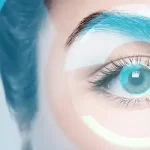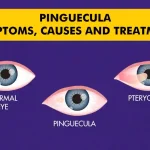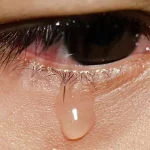Summary: Squint eye in adults results from nerve, muscle, or health-related issues. Early detection, vision therapy, and modern surgical options can restore alignment, improve coordination, and prevent long-term vision complications.
|
Key Takeaways:
|
A squint eye, medically referred to as strabismus, occurs when the eyes are not aligned properly and point in different directions. While it is commonly associated with children, squint eye can also develop in adults due to various underlying reasons. This condition not only affects vision but may also impact a person’s confidence and overall quality of life. Understanding the causes, symptoms, and treatment options is essential for addressing this issue effectively.
What Does a “Squint” in Adulthood Mean?
A squint, medically known as strabismus, occurs when the eyes are not properly aligned and point in different directions. While it is often associated with childhood, squint eye causes in adults are very real and can affect both vision and confidence.
What Can Trigger a Squint in Adults?
Neurological Triggers: Damage to the nerves controlling eye movement (third, fourth, and sixth cranial nerves) can cause misalignment. Common reasons include head trauma, brain tumors, multiple sclerosis, or stroke affecting areas that control eye motion—key squint eye causes in adults.
Muscular and Vision-Related Factors: Eye-muscle weakness or imbalance, often due to disorders like myasthenia gravis, can result in squinting. Uncorrected refractive errors such as myopia or hyperopia, or vision loss in one eye, also disrupt coordination and alignment.
Systemic & Other Health Influences: Conditions like thyroid eye disease, diabetes, or hypertension can damage nerves or muscles, leading to squint. Additionally, age-related muscle weakening, past eye surgeries (like cataract operations), or infections and inflammation may contribute to squint eye causes in adults, highlighting the need for early diagnosis and targeted treatment.
Other Contributing Factors
- Age-Related Changes
Natural aging processes can weaken the muscles responsible for eye alignment, contributing to squint eye causes in adults.
- Infections and Inflammation
Severe infections like meningitis or encephalitis can damage the brain or nerves controlling eye alignment, leading to this condition.
- Medical Complications
Surgical complications, particularly from procedures like cataract eye surgery, are less common but recognized as potential squint eye causes in adults.
Recognising the Signs: Symptoms to Watch
Some common indications that you may have a squint in adulthood include:
- One eye visibly turning inward, outward, up or down while the other remains focused.
- Double vision or overlapping images.
- Difficulty focusing, eye strain, and frequent headaches.
- Head tilt or turning of the head to compensate.
Can Squint Eye Be Corrected in Adults?
Yes, squint eye can often be corrected in adults through a range of treatment options. The specific approach depends on the underlying cause and severity of the condition. Early diagnosis and intervention are crucial for effective outcomes.
How to Fix a Lazy Eye in Adults
Non-Surgical Methods: Corrective or prism lenses can help address refractive errors, align visual input, and reduce double vision. Vision therapy with targeted exercises for squinting eyes in adults strengthens coordination between both eyes. In certain cases, botulinum toxin (Botox) injections can temporarily relax overactive eye muscles.
Surgical & Advanced Options:If non-surgical methods fail, strabismus surgery may be required to adjust eye-muscle attachments and realign the eyes. An adjustable-suture technique allows post-operative fine-tuning for better precision.
Addressing Amblyopia (Lazy Eye) in Adults: Although commonly treated in childhood, amblyopia in adults or lazy eye in adults can improve with therapies that strengthen the weaker eye (lazy eye treatment for adults/amblyopia treatment for adults), combined with proper alignment correction and early diagnosis for the best outcomes.
What to Expect After Treatment
Once a treatment plan is decided for squint eye treatment in adults:
- Expect a comprehensive eye exam to pinpoint the cause and severity.
- A personalised treatment plan will be created based on your condition.
- Post-treatment care is critical: follow-up appointments, proper eye care, monitoring for complications like infection, and lifestyle adjustments (screen-time moderation, good lighting, protective eyewear) all assist long-term success.
Tips for Post-Treatment Care After Squint Eye Correction
Proper care after squint eye treatment is essential for optimal recovery and long-term success. Here are some helpful tips:
Follow Medical Advice
- Attend all follow-up appointments to monitor progress.
- Take prescribed medications as directed to manage pain or prevent infections.
Eye Care and Protection
- Avoid rubbing or touching the eyes, especially in the initial recovery phase.
- Wear protective eyewear, if recommended, to shield your eyes from dust or injury.
Lifestyle Adjustments
- Limit screen time and reduce eye strain by taking frequent breaks.
- Maintain good lighting while reading or working.
Monitor for Complications
- Watch for signs of infection, such as redness, swelling, or discharge, and report them to your doctor immediately.
- Notify your doctor if you experience persistent double vision or discomfort.
Struggling with squinting eyes? Take control of your vision today. Schedule a Consultation with Our Expert Ophthalmologists!
FAQs
What are the main causes of squint eye in adults?
Squint eye in adults can result from neurological disorders, eye muscle weakness, vision loss, systemic health conditions like diabetes or thyroid disease, and traumatic injuries.
Can squint eye be corrected in adults without surgery?
Yes, non-surgical options such as corrective lenses, prism glasses, vision therapy, and Botox injections are effective for many cases. However, surgery may be necessary for severe conditions.
Is squint eye treatment in adults effective?
Treatment outcomes are generally positive, especially when the condition is diagnosed early, and the recommended plan is followed diligently.
How long does it take to fix a squint eye in adults?
The duration of treatment varies based on the method used. Non-surgical treatments may show results within weeks to months, while recovery from surgery typically takes a few weeks.
Can amblyopia be corrected in adults?
Yes, amblyopia in adults can improve with consistent vision therapy.
Can a lazy eye be fixed in adults?
Yes, lazy eye in adults can be corrected through targeted exercises.





